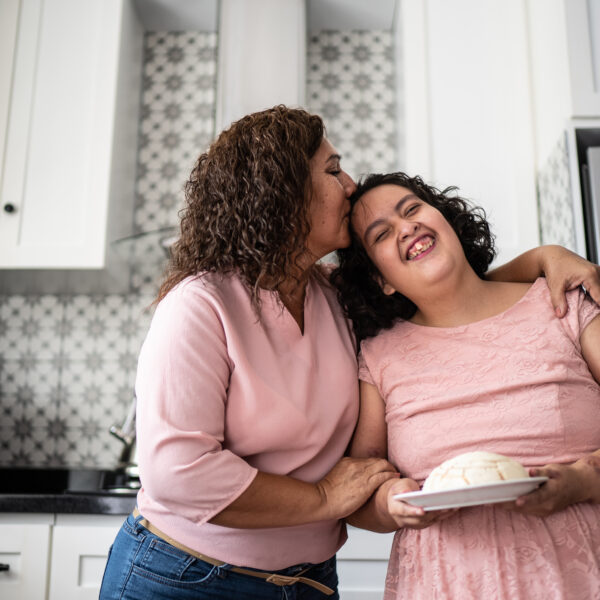Housing
Many young disabled people will reach an age where they want to live more independently. Wherever they choose to live as an adult, it’s important to start planning early for this important decision.
Types of housing
Young people with additional needs may choose to live:
- with their family
- in private or social rented housing
- in owned accommodation
- in residential care or specialist placements
- in adult placement schemes called ‘Shared Lives’.
In Sussex, the demand for housing support often exceeds what’s available so be aware that it may take time and perseverance to get the option you and your young person prefer.
The first step is always to speak to a professional who can help.
Continuing to live at home
Many adults with learning disabilities and/or autism live with their families. The council can offer help to make this work. Some support can be provided through ‘outreach’ support, day activities, short breaks/respite, or access to social clubs. This includes services specialising in working with autistic young people or those with complex health and other needs.
Some young people have a personal budget and get direct payments that can be used creatively to employ personal assistants or meet their needs in other ways and to pay for respite and short breaks.
Read more about direct payments.
Living in a council home/social housing
Your young person can apply for a home through the local council. This is often called social housing. Social housing is property rented from the council or a housing association.
People living in social housing have a secure or assured tenancy which means they can only be evicted for breaking certain rules, and only if a judge agrees. So, if a young person sticks to the rules of the tenancy, this could be a home for life.
Social housing has cheaper rents which can usually be paid in full by housing benefits, depending on the young person’s income.
The landlord is the council or housing association and they are responsible for most repairs and maintenance.
Unfortunately, there is very little social housing in the southeast, and it can sometimes take a long time before there is an offer of a property. Also remember that a young person’s support needs will need to be arranged before they move in.
How to apply for social housing
In Brighton &Hove, you register with Homemove, the letting scheme for council and housing association homes in Brighton & Hove and other places across East and West Sussex. The scheme covers all the available council and housing association homes, including sheltered housing.
In Brighton & Hove: Apply to join the housing register (brighton-hove.gov.uk)
In East Sussex local district and borough councils allocate social housing. See
- Social housing, right to buy and exchanges | East Sussex County Council
- Or Sussex Homemove – Hastings
When you complete the application form, give as much information as possible about any disabilities, impairments, medical conditions or mental health needs your young person may have. Ask the young person’s GP or any other medical workers for supporting information. Or, if they have a social worker, transition worker or care manager, you could ask them for a supporting letter.
If you need adaptations or an adapted property, some councils and housing associations might ask for an Occupational Therapists needs assessment as part of your application. Read more about adaptations.
Private rented accommodation
When there is so little social housing, and when waiting lists are so long, renting privately can be a good option for some disabled adults. There are lots of different types of properties available to rent privately and it is one of the fastest ways to find somewhere to live nearby. You can look for properties online, via local letting agents or in local newspapers.
Tenancies
Housing benefit in private accommodation
Some private landlords will not take tenants who are on housing benefit.
Home ownership schemes
My Safe Home is an organisation that provides guidance and support for carers or disabled people wanting to buy their own home. See their website www.mysafehome.info.
To qualify for this support the person must be getting DLA on the higher or middle rate for care.
Shared Lives
Shared Lives is like an adult version of having a foster family. The schemes recruit, assess and support carers to offer accommodation or care and support in their family home. Shared Lives schemes can be a good stepping stone for a person with a learning disability or autism moving towards living more independently. Some young people who still live at home with their parents might live with a Shared Lives carer part-time, for example a few days a week.
Who can use Shared Lives services?
Shared Lives placements are funded by the council for people with eligible needs. The council will carry out a financial assessment to see if the person needs to make a financial contribution. It will be the young person’s finances that are assessed, not their parents.
Get more information about Shared Lives in your area here:
- Brighton & Hove: Shared Lives (brighton-hove.gov.uk)
- East Sussex Shared Lives Scheme – East Sussex 1Space
Or find out more about how Shared Lives schemes work:
Supported living
Supported living or supported housing, as it’s sometimes called, means living in accommodation where there are staff on site.
There are two main forms of supported living in our area: living in a ‘group’ home, where people have their own room, but share other facilities; or living in a self-contained flat or studio. For both forms, support may vary widely; from 24 hours staffing to just a few hours a day.
In supported living or housing the young person can have a tenancy which gives them more housing rights. They can claim housing benefit and keep most of their benefits like Personal Independence Payment and Universal Credit. However, they will have to contribute some of these benefits to their support costs, after a financial assessment. In supported living, there is a focus on gaining skills and independence and sharing responsibility for things like cooking, cleaning, and shopping.
The positive side supported living is that the young person will have company as well as the security of a service and staff team. However, like all young people, it’s important to remember they can be friends one moment and fall out the next and trusted staff can leave.
Who can use supported living schemes?
Choosing the right supported living scheme
Details of supported living accommodation in Brighton and Hove and East Sussex can be found at Care Choices | Find Care Homes, Care Providers, Information and Guidance. You just put in your postcode and the type of care you are looking for and you can browse the results.
Supported living is registered as ‘Services in your home’ with the Care Quality Commission. You can look up their latest checks on local supported living services on the Care Quality Commission website at www.cqc.org.uk
There is some supported accommodation for young people who are at risk of homelessness or who have mental health needs. This type of accommodation offers low to medium support such as having staff on site during office hours and tends to be short term.
Find out more about temporary supported accommodation in Brighton & Hove
More about temporary accommodation with on site support in East Sussex
Residential care
Residential care offers specialist services with high levels of staffing 24 hours a day. It’s for people who need high levels of direct support with their personal care and daily living. If a young person is quite independent in these areas, then residential care is probably not the right option for them.
Residential care almost always involves living with other disabled people who have been ‘placed’ there, so there is less choice around the people the young person will live with or the people who will support them. Many of these homes tend to cater for older people rather than young people. The exceptions to this are some residential care homes for young people with complex physical/health needs or those with complex behaviour that challenges others.
Residential care homes vary in size from three or four to 10 or 12 rooms in a house. Most are ordinary homes in ordinary streets. You need to find the right vacancy, and compatibility with other residents can be an issue.
In a residential home the young person will not have a tenancy, they will have a licence, which means they have less rights and the landlord has access to their room and can change their room.
Who can get residential care?
You can find details of local residential care homes in Brighton & Hove and East Sussex on the Care Choices website at www.carechoices.co.uk. You just put in your postcode and the type of care you are looking for and get results for all the relevant care homes in the area.
Care homes must be registered, so are subject to inspection by the Care Quality Commission. You can see details and recent inspection reports of care homes on the above website or on the Care Quality Commission’s website. Or you can telephone the CQC on 03000 616161.
Getting adaptations to housing
The council can help adapt a property whether you own it, rent privately, or are a council or housing association tenant. This can include providing equipment to make daily tasks easier, adapting your home to improve access or help with bathing facilities. Read more about adaptations to your home.





